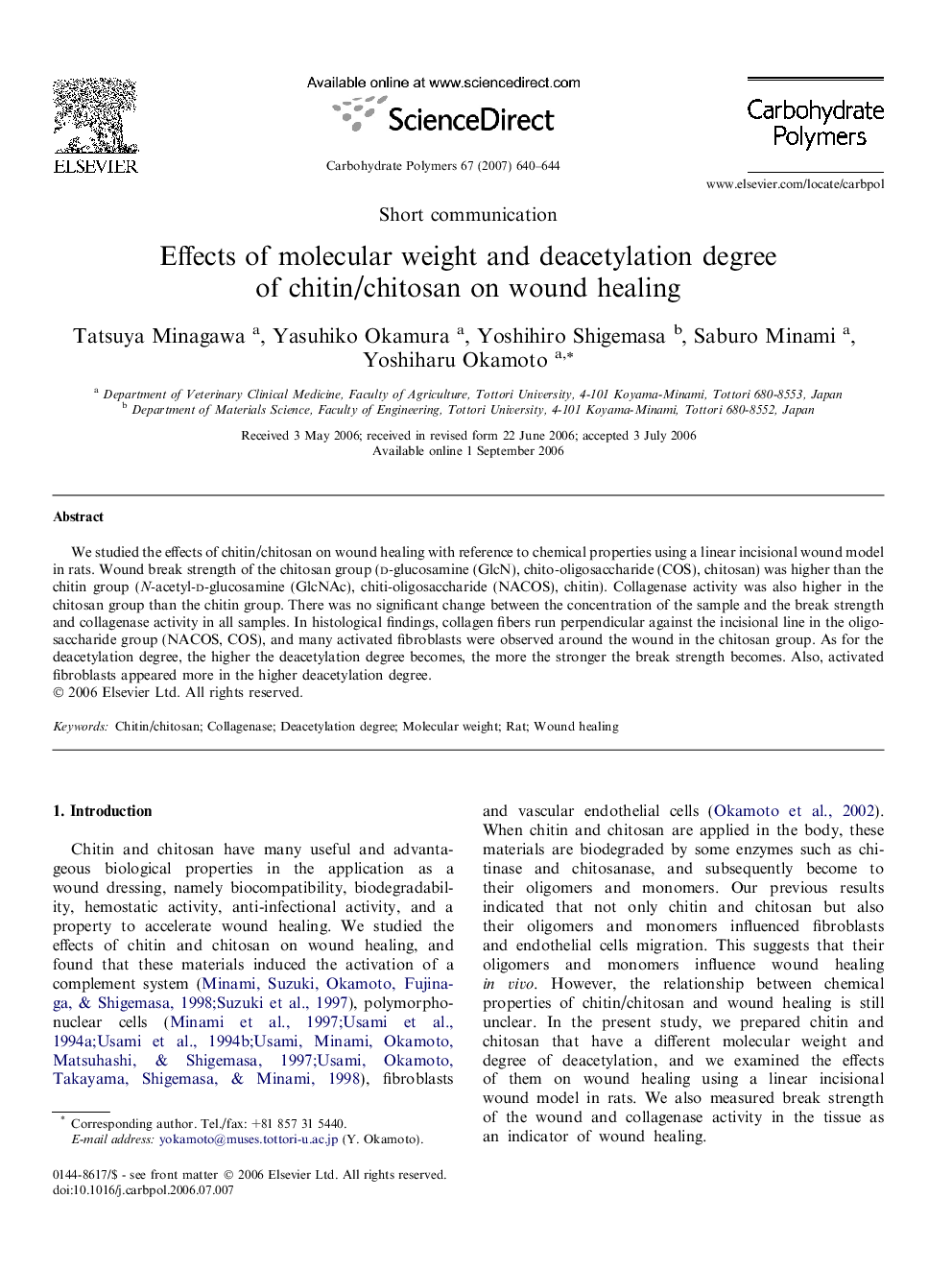| Article ID | Journal | Published Year | Pages | File Type |
|---|---|---|---|---|
| 1386761 | Carbohydrate Polymers | 2007 | 5 Pages |
We studied the effects of chitin/chitosan on wound healing with reference to chemical properties using a linear incisional wound model in rats. Wound break strength of the chitosan group (D-glucosamine (GlcN), chito-oligosaccharide (COS), chitosan) was higher than the chitin group (N-acetyl-D-glucosamine (GlcNAc), chiti-oligosaccharide (NACOS), chitin). Collagenase activity was also higher in the chitosan group than the chitin group. There was no significant change between the concentration of the sample and the break strength and collagenase activity in all samples. In histological findings, collagen fibers run perpendicular against the incisional line in the oligosaccharide group (NACOS, COS), and many activated fibroblasts were observed around the wound in the chitosan group. As for the deacetylation degree, the higher the deacetylation degree becomes, the more the stronger the break strength becomes. Also, activated fibroblasts appeared more in the higher deacetylation degree.
